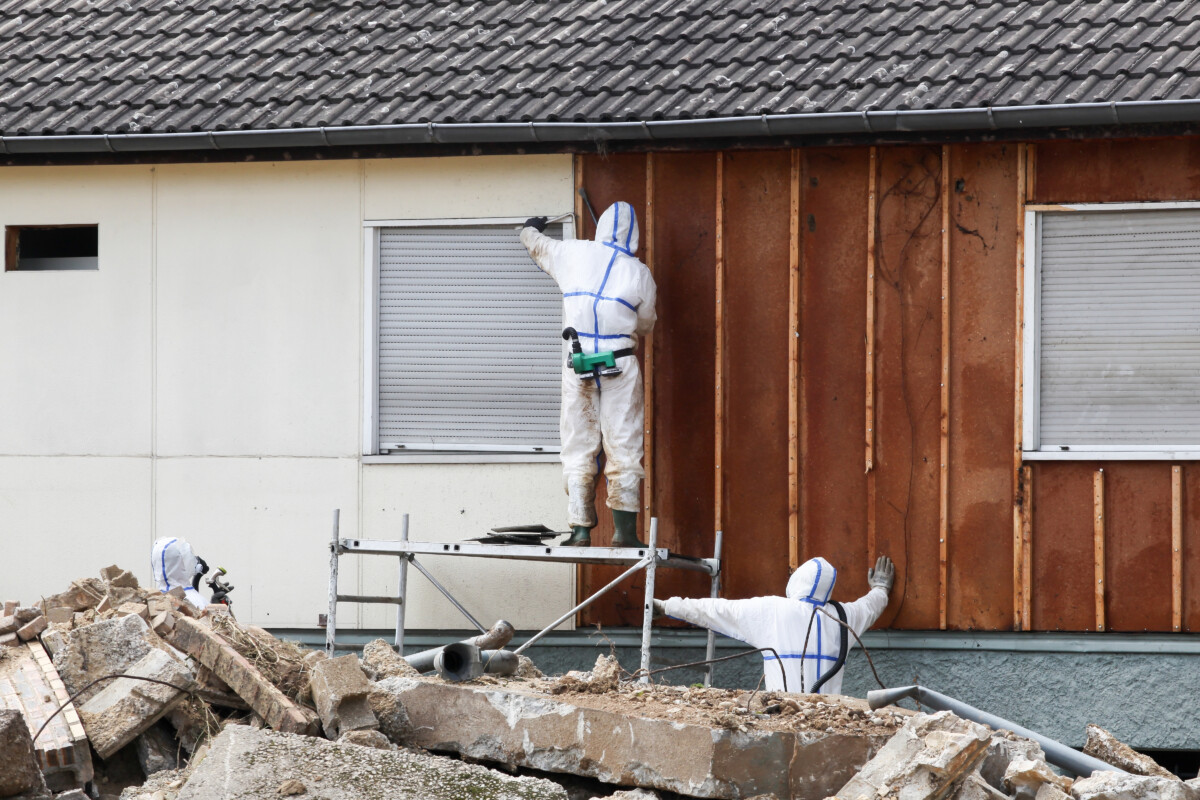Asbestos flooring danger
22 May 2023, Health & Safety, Prove Your Know How

WorkSafe is reminding businesses and their customers of the very real risks that can exist when refurbishing, following a case of poorly handled flooring containing asbestos
Asbestos is a naturally occurring mineral containing strong fibres invisible to the eye. When asbestos is disturbed or removed, the fibres can become airborne and be inhaled, which can pose a significant health risk.
Inspired Enterprises Limited, trading as Harrisons Carpet and Flooring Christchurch West, was hired to replace the flooring in a house in the suburb of Broomfield in June 2021.
A subcontractor, Lawrence Gannaway (trading as Simply Floors) uncovered old vinyl and disturbed its backing during removal, then disposed of it in an unsafe way. Testing of the broken vinyl later returned a positive result for chrysotile asbestos.
Both Inspired Enterprises and its subcontractor Mr Gannaway have now been sentenced in the Christchurch District Court for health and safety failures. A WorkSafe investigation found neither identified at the outset that asbestos was likely to be disturbed. An asbestos management plan should have been in place but was not, and the customer’s quote made no mention of asbestos.
“This unfortunate incident shows how even well-known operators like a Harrisons’ franchisee can be caught out on the basics of asbestos safety,” says WorkSafe’s General Inspectorate head Simon Humphries.
Buildings constructed or renovated before 2000 are likely to contain asbestos materials.
“It’s not OK to assume there is no risk and you are in the clear. Businesses have a duty to identify and manage risks associated with asbestos, and management plans are required for workplaces where asbestos or asbestos-containing material has been identified or is likely to be present. WorkSafe has comprehensive information on its website to help businesses and people understand the risks of asbestos and how to manage them,” said Humphries.
Background
Inspired Enterprises Limited (trading as Harrisons Carpet and Flooring Christchurch West) was sentenced at the Christchurch District Court on 16 February 2023.
A fine of $52,500 was imposed.
IEL was charged under sections 36(2), 49(1) and 49(2)(c) of the Health and Safety at Work Act 2015.
Being a PCBU having a duty to ensure, so far as reasonably practicable, the health and safety of other persons is not put at risk from work carried out as part of refurbishment works in the kitchen/dining area at [withheld address] Broomfield, Christchurch did fail to comply with that duty.
The maximum penalty is a fine not exceeding $500,000.
Lawrence Gregory Gannaway (trading as Simply Floors) was sentenced at the Christchurch District Court on 16 February 2023.
A fine of $1100 was imposed.
Simply Floors was charged under Regulation 26 of the Health and Safety at Work (Asbestos) Regulations 2016.
Being a PCBU who was carrying out refurbishment of a home on or about 21 June 2021 failed to ensure that all asbestos that was likely to be disturbed by the refurbishment is identified; and so far as is reasonably practicable, that the asbestos was removed before the refurbishment was commenced.
The maximum penalty is a fine not exceeding $10,000.
More must be done to manage asbestos risks
Three organisations dedicated to reducing and eliminating asbestos exposure are calling on businesses and tradies to do better and keep themselves, their workers and others safe following Asbestos Awareness Week (1-7 April).
WorkSafe, the New Zealand Demolition & Asbestos Association (NZDAA) and the Faculty of Asbestos Management of Australia and New Zealand (FAMANZ) have come together to encourage better asbestos management.
“It’s our number one work-related killer, with around 220 people dying each year from preventable asbestos-related disease,” said WorkSafe Chief Executive Phil Parkes.
“What we’re seeing today is the legacy of past exposure to asbestos, often while at work. But action must continue to prevent future illness and death through proper asbestos handling and management.”
When kaimahi (workers) are required to work on asbestos-containing material they must be trained to do the work safely. This means understanding the risks involved and controls used to suppress or contain any asbestos-containing dust that is generated and how to dispose of asbestos waste safely so that others are not exposed to the dust.
“The dangers of asbestos exposure have been widely known for decades, and it’s important that businesses and tradies manage the risk appropriately. All kaimahi have the right to be kept healthy and safe at work,” said Parkes.
“Lung diseases caused by asbestos, such as lung cancer, mesothelioma and asbestosis, have taken a dreadful toll robbing many of their health and time with their whānau. Businesses must manage the risks from asbestos to keep people healthy and safe.”
Contractors remain at risk
NZDAA President Helina Stil says the amount of work being carried out in the construction industry, combined with aging residential and commercial buildings, means it’s not a ‘yesterday problem’ – asbestos exposure continues to be a risk.
“The proliferation of asbestos-containing materials in houses, buildings and machinery until the 1990’s, combined with the fact these are progressively deteriorating and are approaching or have exceeded their design life, means there remains the potential for accidental exposure by workers, DIYers and others,” said Stil.
“Asbestos removalists are one part of the ecosystem, but it also begins with kaimahi on any site knowing how to identify and manage asbestos. This includes homeowners, landlords and property managers as well. Asbestos should be identified and appropriately addressed in similar fashion as a business would any other health and safety risk.”
FAMANZ is calling on businesses who need to remove asbestos to make sure they’re using quality professionals who belong to an industry body.
“Unsafe levels of asbestos exposure are happening every day because of poor work practices, insufficient identification of hazards prior to works, and a blatant disrespect for health and safety,” said FAMANZ Director Bridgette Jennings.
“Cost is cited as being more important than quality in the eyes of businesses when choosing qualified people to survey, remove, and assess asbestos. This attitude of price over competence needs to change. Quality must come first to ensure all reasonably practical steps are taken to protect people now and prevent more deaths in the future.”
Register to earn LBP Points Sign in
1 Comment
Leave a Reply
You must be logged in to post a comment.



great